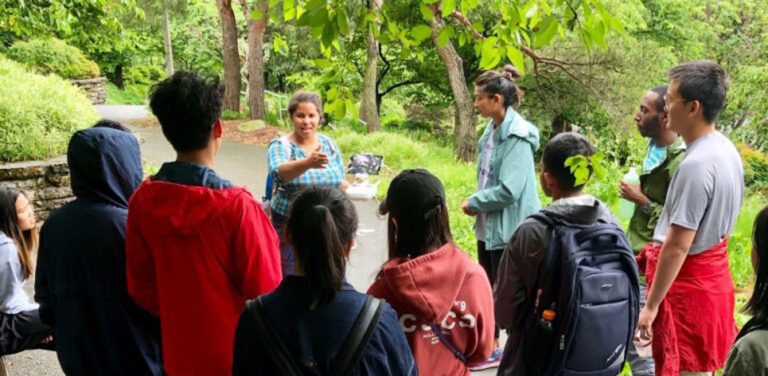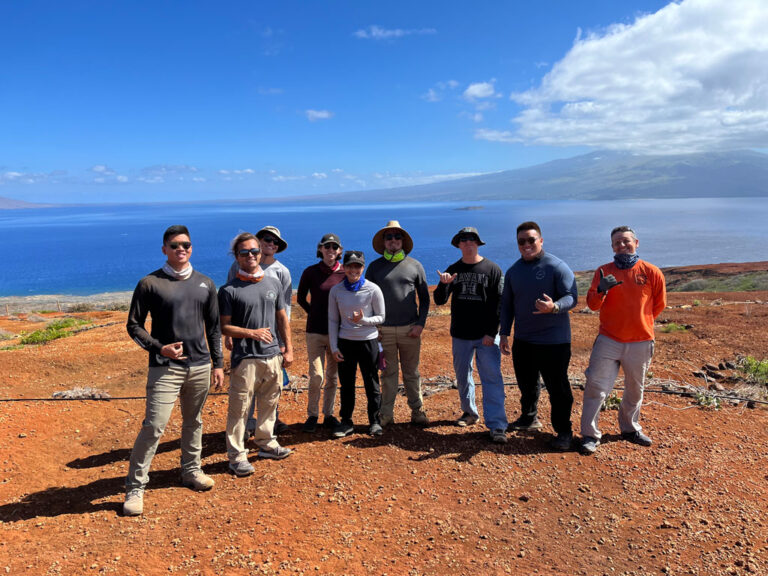Op-Ed: Make Civil Rights a Geography Awareness Week Theme
We have thought for some time now that it would be educationally productive to have a Geography Awareness Week theme devoted to civil rights. Tragically, events over the summer—especially the massacre at the Emanuel AME Church in Charleston, South Carolina—convince us that such an event is now socially and politically necessary. Across the country—from the fires of Ferguson, Missouri, to the most recent controversy surrounding the unjust arrest and suspicious death of Sandra Bland in Waller County, Texas—racialized violence, discrimination, and white supremacy demonstrates the power racism has over the lives of our communities, including the students in our classrooms. We encourage the National Geographic Society (NGS) and other prominent disciplinary organizations such as Association of American Geographers (AAG), American Geographical Society (AGS), National Council for Geographic Education (NCGE), and Canadian Association of Geographers (CAG) to seize this moment and organize this initiative. Continued silence not only demonstrates tacit approval of inequity in U.S. society, but calls into question the very relevance of Geography to solve the most pressing social issues in U.S. society
Observed every third week in November since 1987, Geography Awareness Week is a national and international opportunity to promote the importance of geography education and the relevance of spatial perspectives and tools to studying contemporary issues. To use a famous term recently invoked by AAG President Sarah Bednarz, Awareness Week is Geography’s “bully pulpit,” one of only a handful of times during the year in which the discipline has the full attention of school administrators, news media, government leaders, and the general public. Making civil rights the theme of Geography Awareness Week sends a strong message that we, as geographers, feel strongly about the need to address the historical and contemporary struggles of people of color in the United States as well as the general importance of human rights and social justice as they apply across a wide range of social groups, identities and issues—here at home and in other countries.
According to a 2011 Southern Poverty Law Center (SPLC) report, the United States has done a “dismal” job of including discussions of civil rights history, racism, and discrimination into state curriculum and educational standards. All 50 states were evaluated and graded. You might want to check out how your state fared. Even if your home state passed, it is important to note that SPLC’s expectations were somewhat modest—states received an “A” if their curriculum and standards included at least 60% of the recommended content related to the civil rights movement. No state included more than 74% of recommended content—a “C” in most of our own schools. In Sandra Bland’s Texas—which included only 35% of the civil rights content recommended by the SPLC—there is a tradition of the state school board revising textbooks in ways that “whitewash” human injustices. In the Texas history textbooks that will take effect in fall 2015, little mention is made of the Ku Klux Klan and Jim Crow laws. Students will barely read about racial segregation, and slavery will be downplayed as a leading cause of the American Civil War. These developments parallel the frightening material reality that the strides of the Movement are being eroded away with the ongoing racial and economic re-segregation of schools. Perhaps we shouldn’t be surprised given that, according to the SPLC report, “only 2% of high school seniors in 2010 could answer a simple question about the U.S. Supreme Court’s landmark Brown v. Board of Education decision” (p. 7).
Our own state of Tennessee did marginally better (39%) and it has had its own embarrassing moment of curriculum reform, when Tea Party groups demanded that state history textbooks remove references that would connect the founding fathers to slavery and the removal of indigenous peoples. The efforts of politicians in Tennessee and Texas speak to the continued marginalization of persons of color within our curriculum (an issue addressed recently by past-President Mona Domosh), which has important implications for the ways in which black lives (amongst other persons of color) not only do not matter, but are expendable, disposable and dangerous for those in power. What is the lesson we should take from Texas and Tennessee? Raising the quantity of civil rights teaching is critical, but it is even more crucial to address the quality of those ideas. There is a desperate need to teach about certain topics and issues in a frank way that challenges the normative power of white supremacy and to discuss issues that are potentially uncomfortable for students—both white and black. Again, continued silence on these issues demonstrates our tacit approval of these actions.
For these reasons we argue the civil rights theme is timely, especially in light of the growing amount of work that university and K-12 geographers are doing on social and environmental justice, peace geographies, and minority political empowerment. It is a theme that is well supported in geographic theory, case studies, and student interest and activism. Indeed, we teach a course in the Geography of Human Rights here at the University of Tennessee. Our in-state colleague, Esra Ozdenerol, has used GIS to map civil rights sites in the city of Memphis, funded in part by a grant from the Benjamin L. Hooks Institute for Social Change. Geography students and faculty from across the country have had teach-ins on #Blacklivesmatter, and led campaigns to challenge the legacy of white supremacy on college campuses (e.g., UNC-Chapel Hill). Additionally, David L. Butler of the University of Southern Mississippi is leading a NSF-funded group of researchers from six universities—including an HBCU—to investigate how the southern plantation heritage tourism industry has traditionally done the same type of erasing of slavery that we now see in Texas history books. Yet, this team is also finding evidence that the representation of slavery at plantations is changing, creating important yet still high contested moments to discuss racism, white supremacy, and black resistance. No doubt, there are many other examples of geographers who could contribute to civil rights pedagogy, some of whom might not have thought about participating in Awareness Week activities until now.
Giving civil rights an official place in our Awareness Week not only opens up space in classrooms to teach about tolerance, diversity, and anti-racism as core geographic values, it also sends a powerful message about the relevance and commitment of geographers to be active participants in making the world a better place. Furthermore, broadening the participation of historically under-represented groups in Geography and other STEM disciplines has emerged as a top priority over the last several years, and AAG has taken a leadership role in this initiative. Put simply, it is time to take the next step. Imagine the kind of “sense of belonging” that can be communicated to underrepresented persons in our classrooms and across the academy when they hear that the discipline of Geography values civil rights and we are willing to devote an entire national campaign to the theme. Highlighting civil rights creates a strategic moment for public engagement, another principle of growing importance in the Academy. Such public engagement can take the form of inviting local activists and community leaders to deliver guest lecturers and workshops in our schools and the organization of service-learning and engaged scholarship partnerships with historically marginalized communities and civic groups. Many geographers are already engaged in a public geography projects with a strong civil rights and social justice dimension. Geography Awareness Week offers an opportunity to highlight and build upon those efforts while also further charting a progressive vision for our discipline. In that vision, geographers do not simply study critical social and environmental issues but make an active intervention in the welfare of communities.
In closing, we reaffirm our request to the Geography establishment to collaborate with us and many of our colleagues to work soon to make civil rights a theme of an upcoming Geography Awareness Week. In the meantime, before that goal is accomplished, geographers are encouraged to teach more about civil rights, anti-racism, and inequality in classrooms and to bring these issues to bear on whatever themes are chosen for Awareness Week. We ask that geographers in community colleges, universities and K-12 schools communicate their views about the need for a civil rights-oriented Geography Awareness Week to NGS, AAG, AGS, NCGE, and CAG. Doing so is important for winning support for the proposal, and we are confident that many leaders in Geography would welcome such an idea. Moreover, if we are to truly build a civil rights consciousness in the field of Geography, it is also important to let these leaders know who you are, what you already do in researching and teaching civil rights, and what more you hope to do along these lines in a late November week in the not too distant future. Let’s collectively break our silence.
—Derek H. Alderman
Professor & Department Head
University of Tennessee
dalderma [at] utk [dot] edu
Twitter @MLKStreet
—Josh Inwood
Associate Professor
University of Tennessee
jinwood [at] utk [dot] edu
Twitter @JoshGeog
AAG Newsletter Op-Eds
The AAG invites brief opinion pieces highlighting the contributions of geographical analysis to the understanding of important public issues and events. Submissions are encouraged from across the full breadth of the discipline. These pieces reflect opinions of contributing AAG members and do not represent an official AAG position on any issue. Op-ed pieces must be consistent with the AAG ethics policy to be considered for publication. Send submissions to newsletter [at] aag [dot] org.


